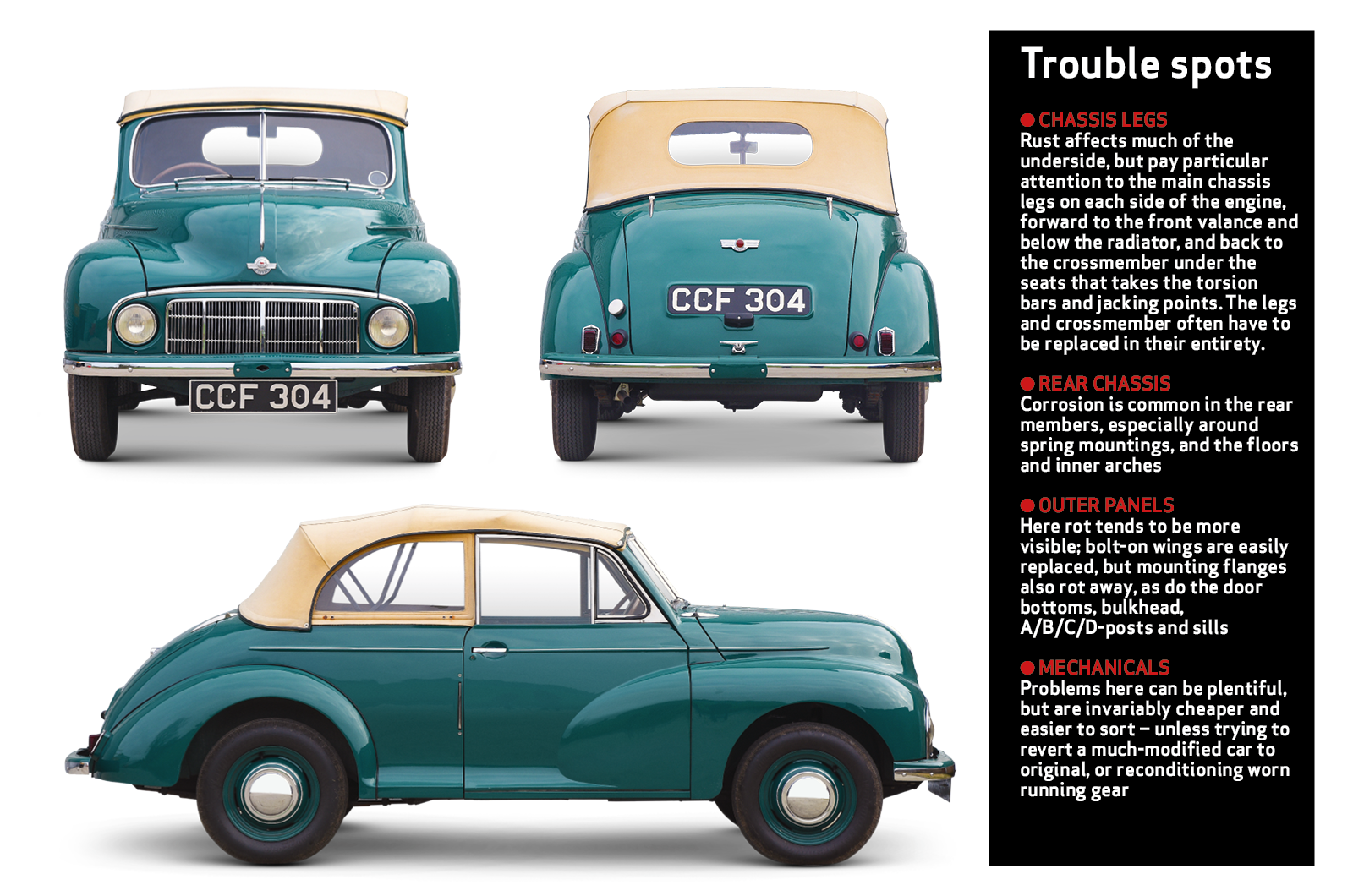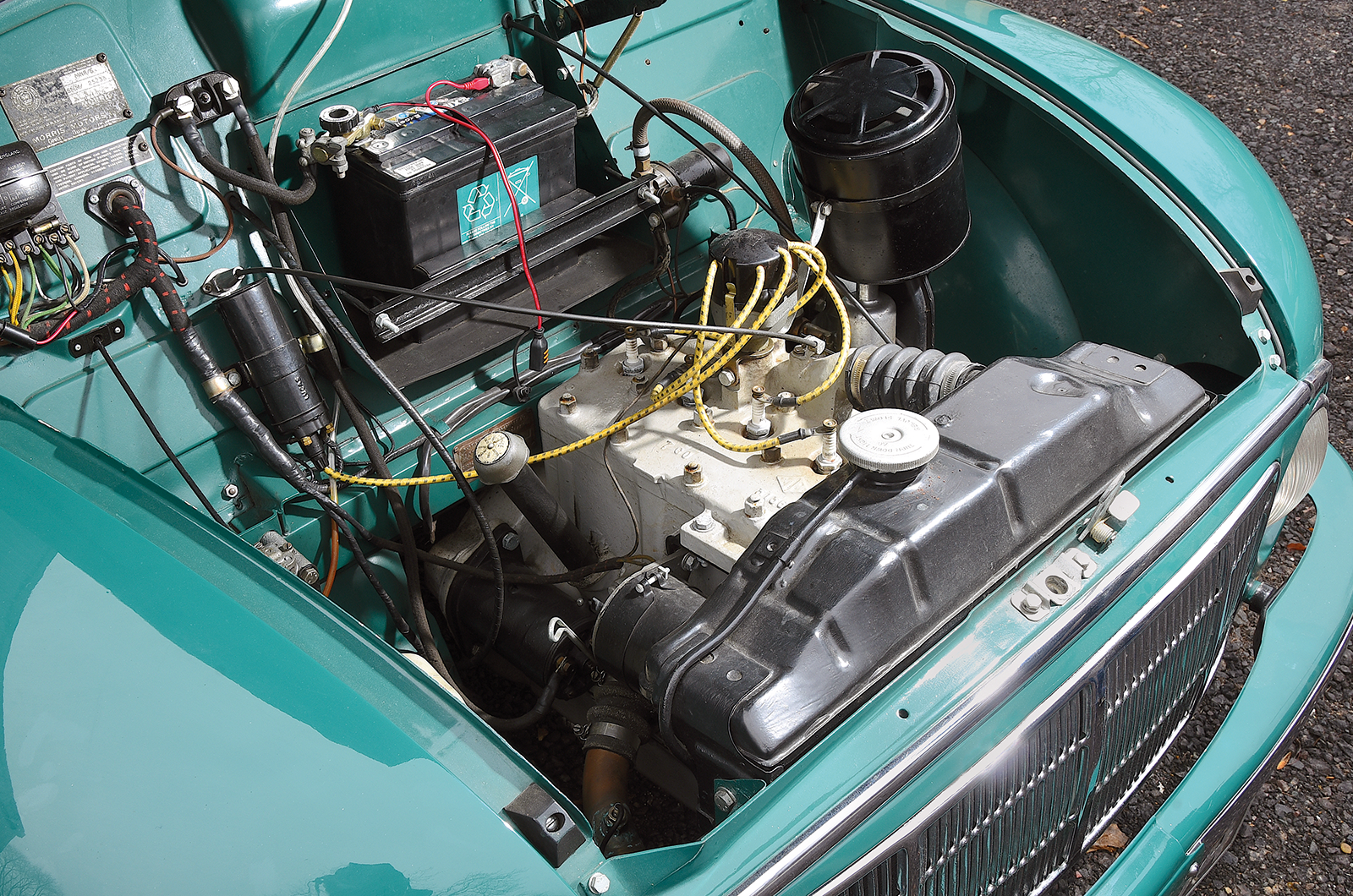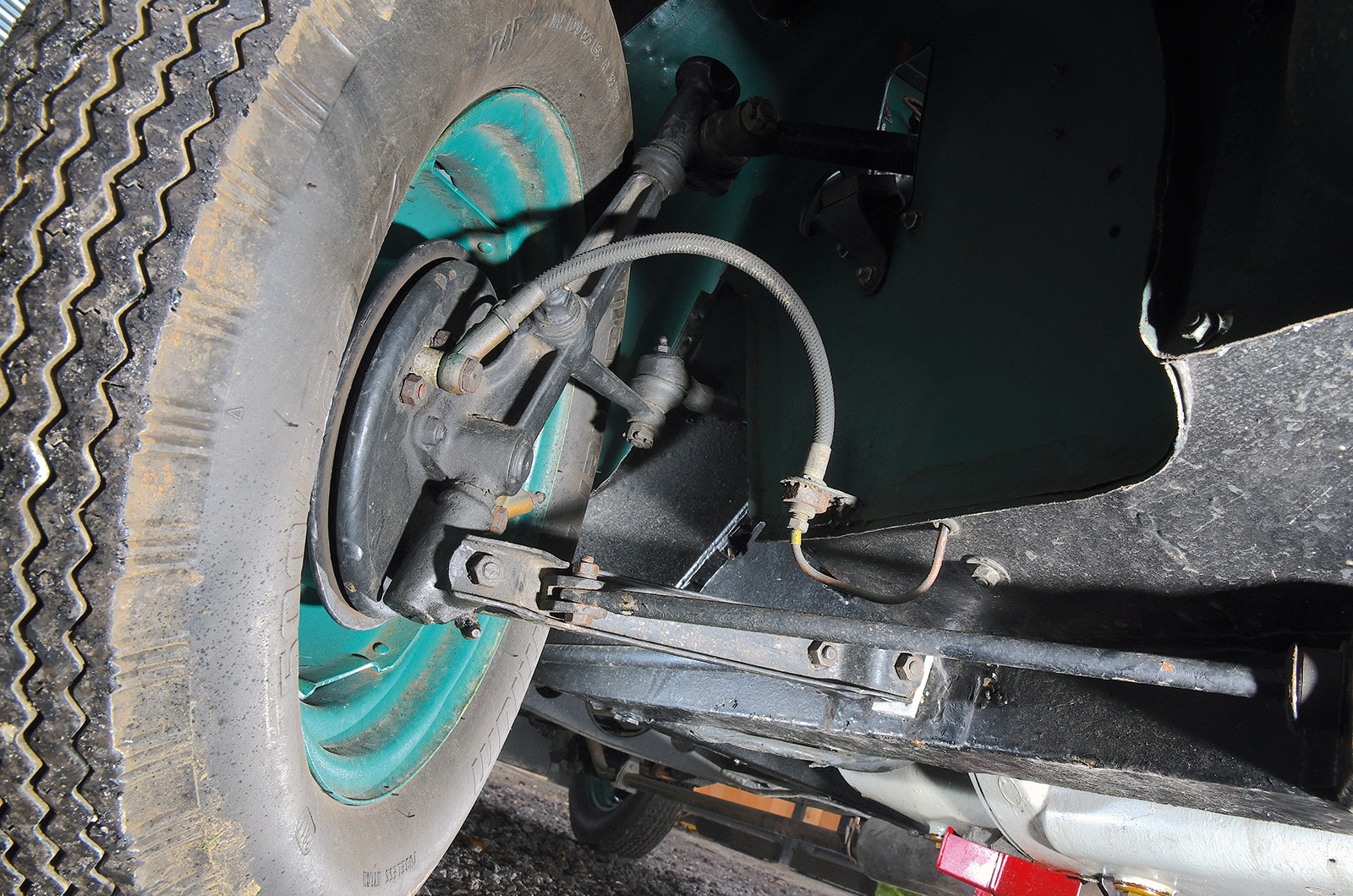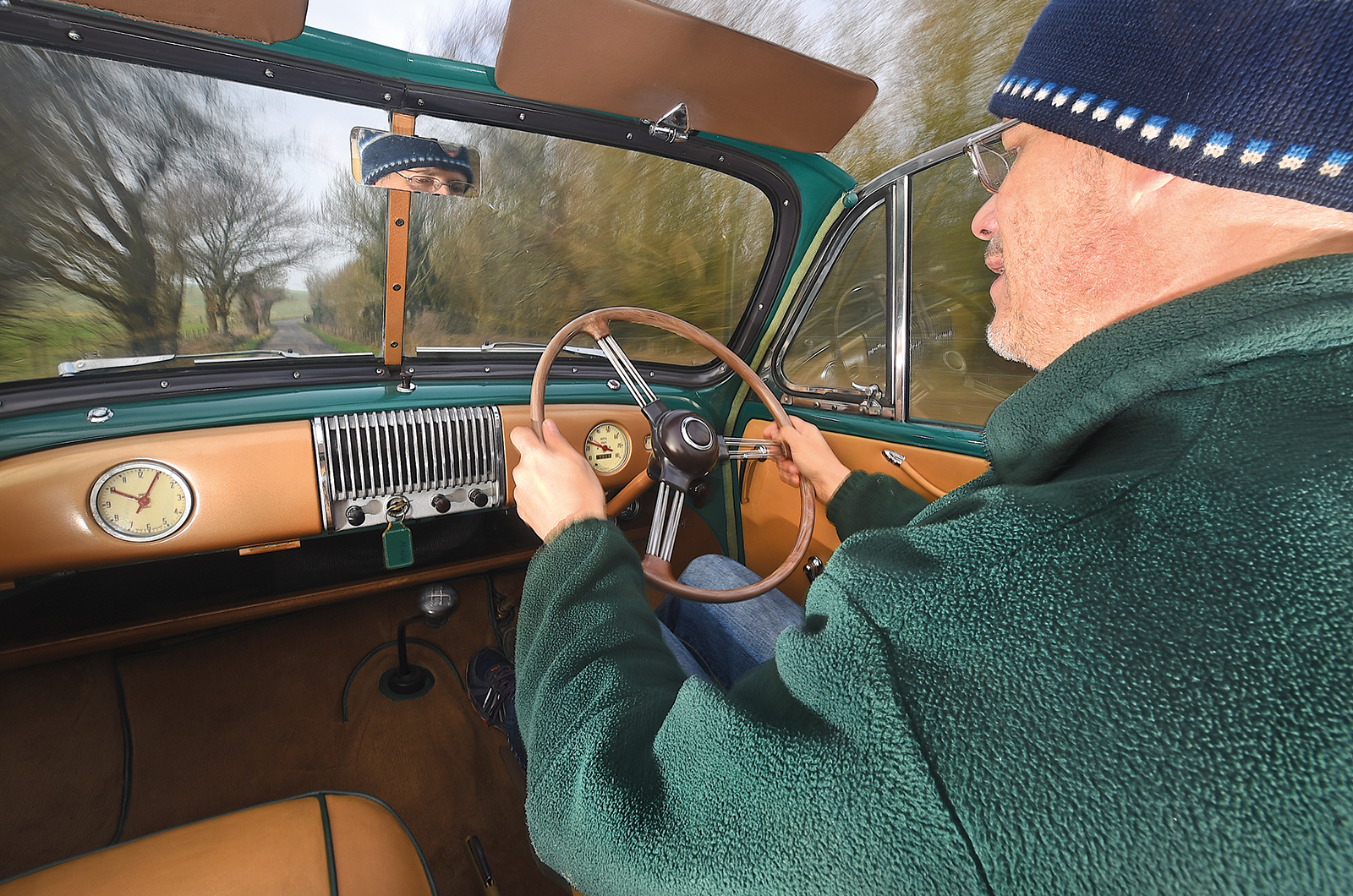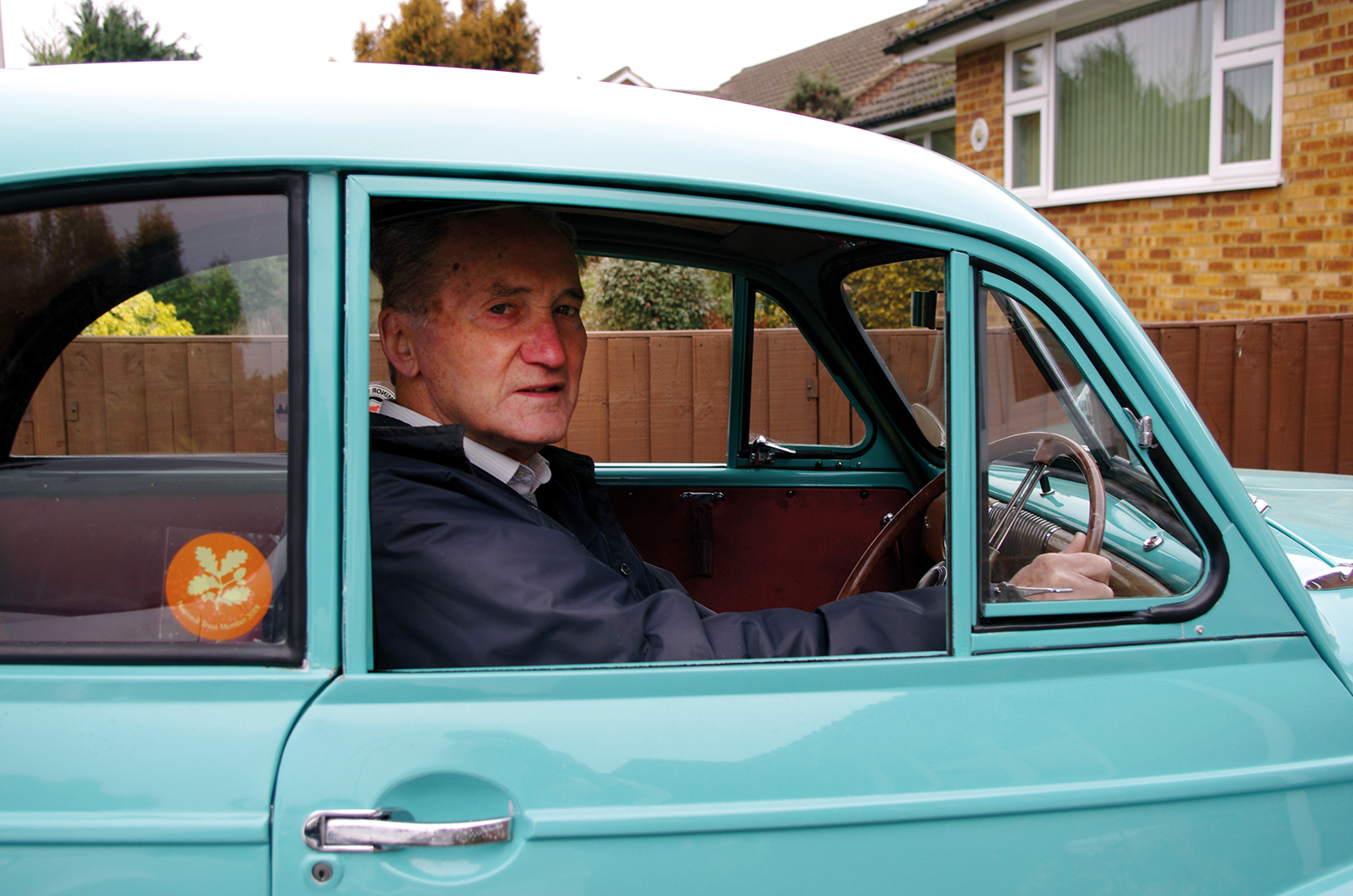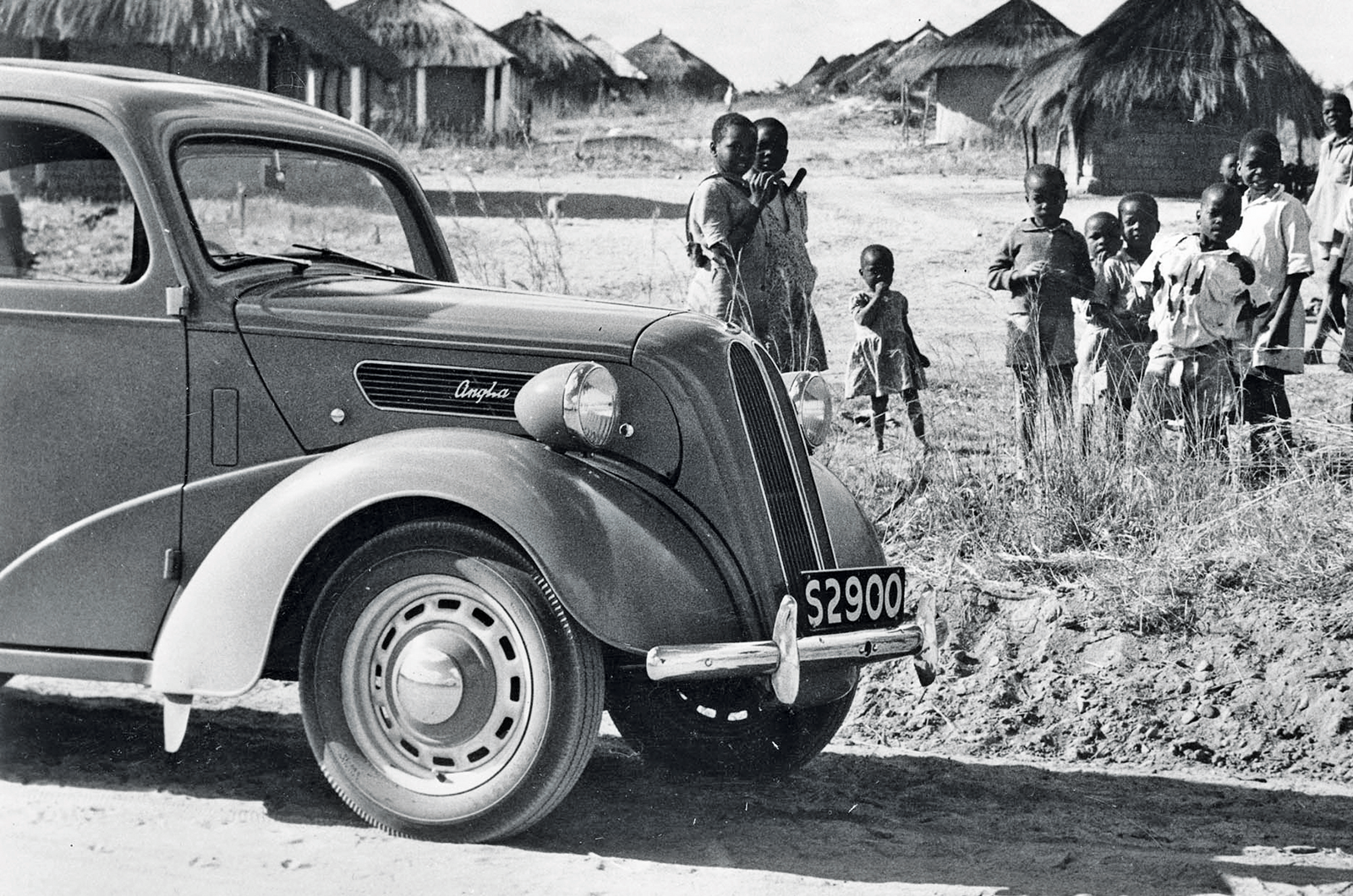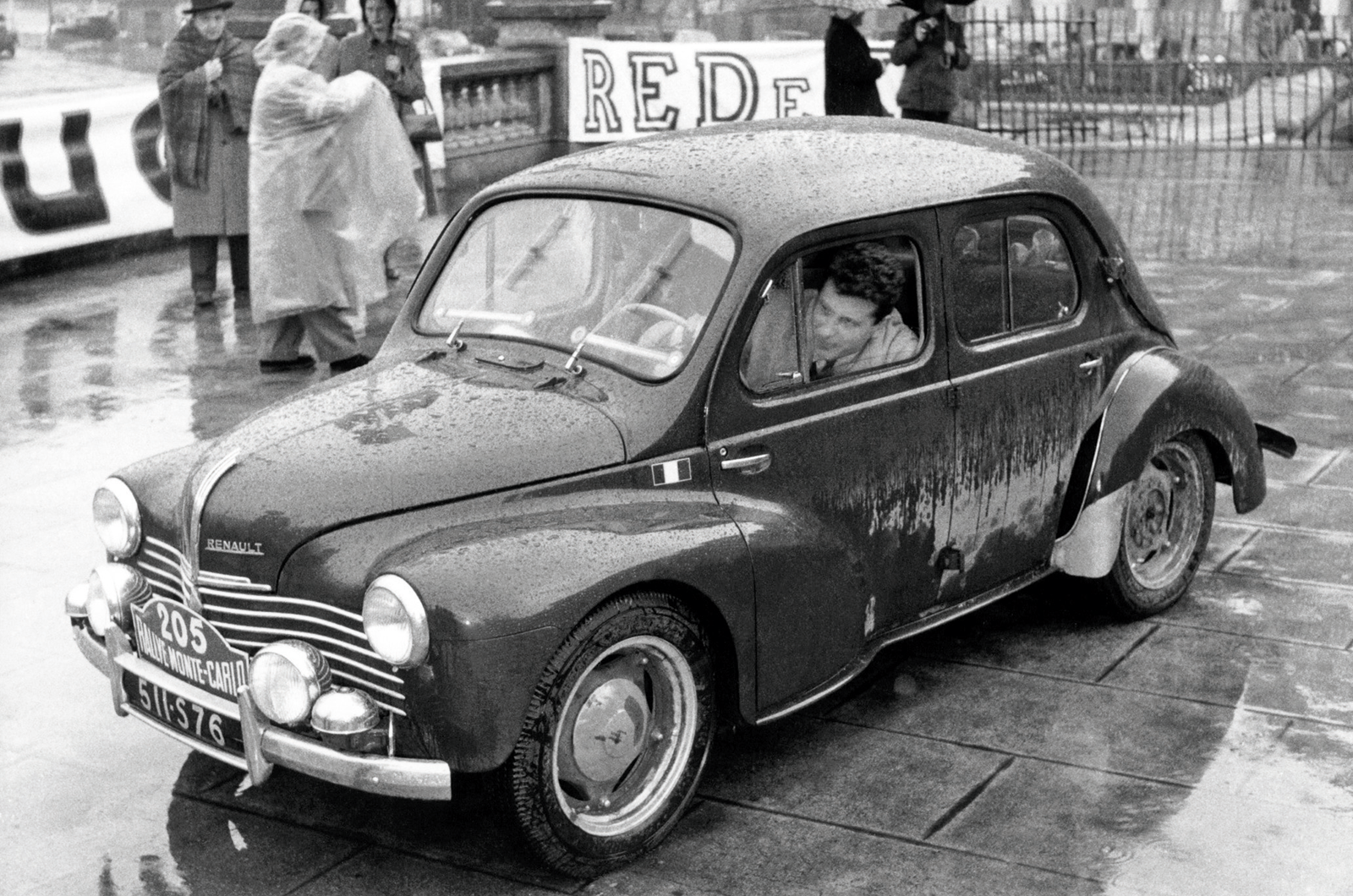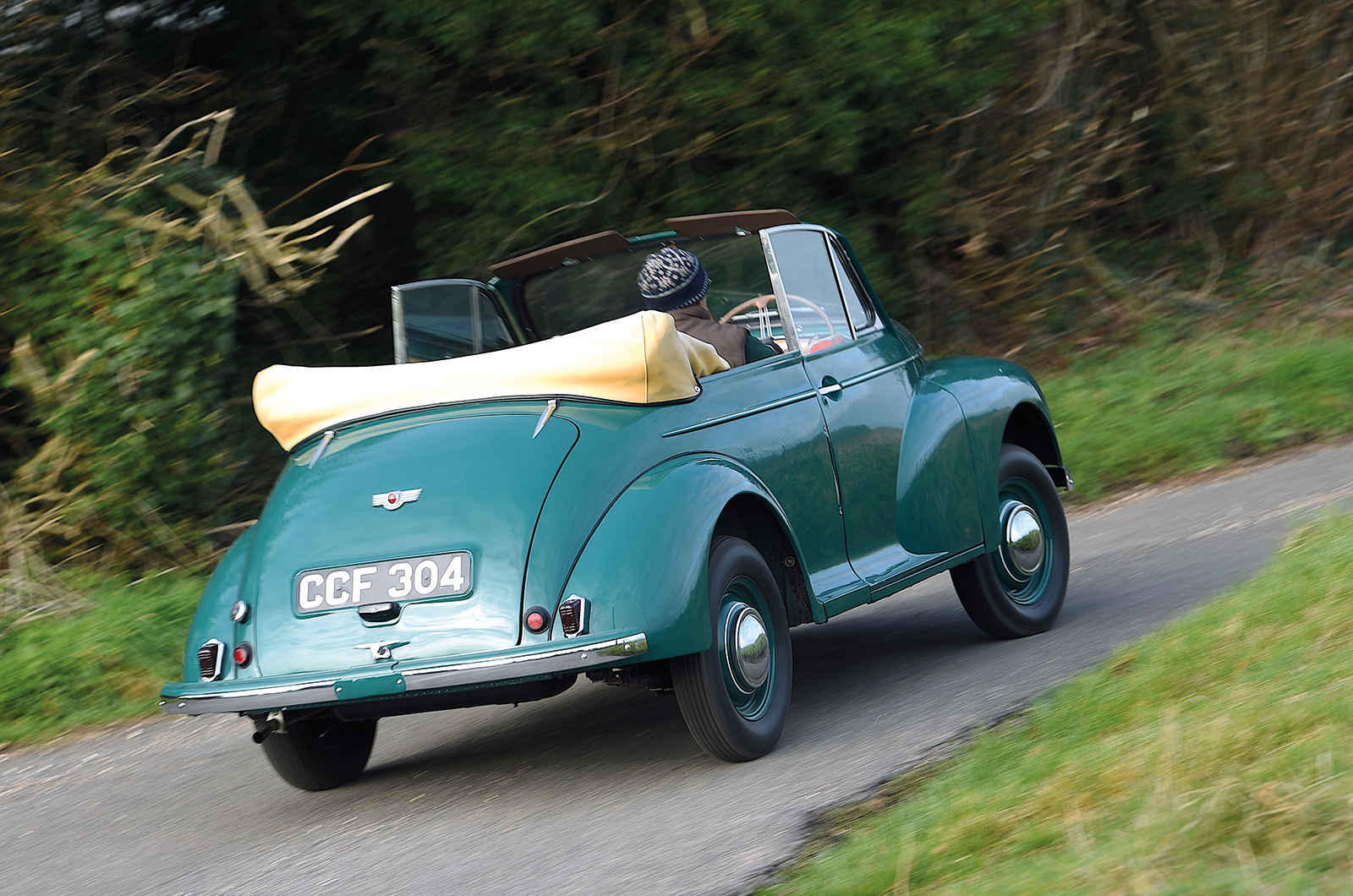
Why you’d want a Morris Minor MM / Series II
Lighter, roomier and more aerodynamic than the Morris Eight Series E, the post-war Minor heralded a sea change in small-car construction and looks, albeit with an antiquated long-stroke sidevalve engine rather than the modern flat-four that designer Alec Issigonis had planned.
At least the engine was well known and proven: reviewers concentrated instead on the Minor’s revelatory handling, space, economy and light controls.
A clever touch on the first ‘lowlight’ cars was that the sidelights doubled as engine-bay illumination. The folding rear seat squab, opening through to the boot, was a rare and modern feature at the time, and combined with a double-folding passenger seat. But it was very basic: the 1949 road test cars had just a single driver’s-side windscreen wiper and a single offside rear light, with a reflector on the nearside.
Morris engineers were developing an overhead-valve version of the 918cc sidevalve when the BMC merger with Austin came, but they were overruled and the ohv A-series from the Austin A30 was dropped in for the Series II, along with its gearbox.

